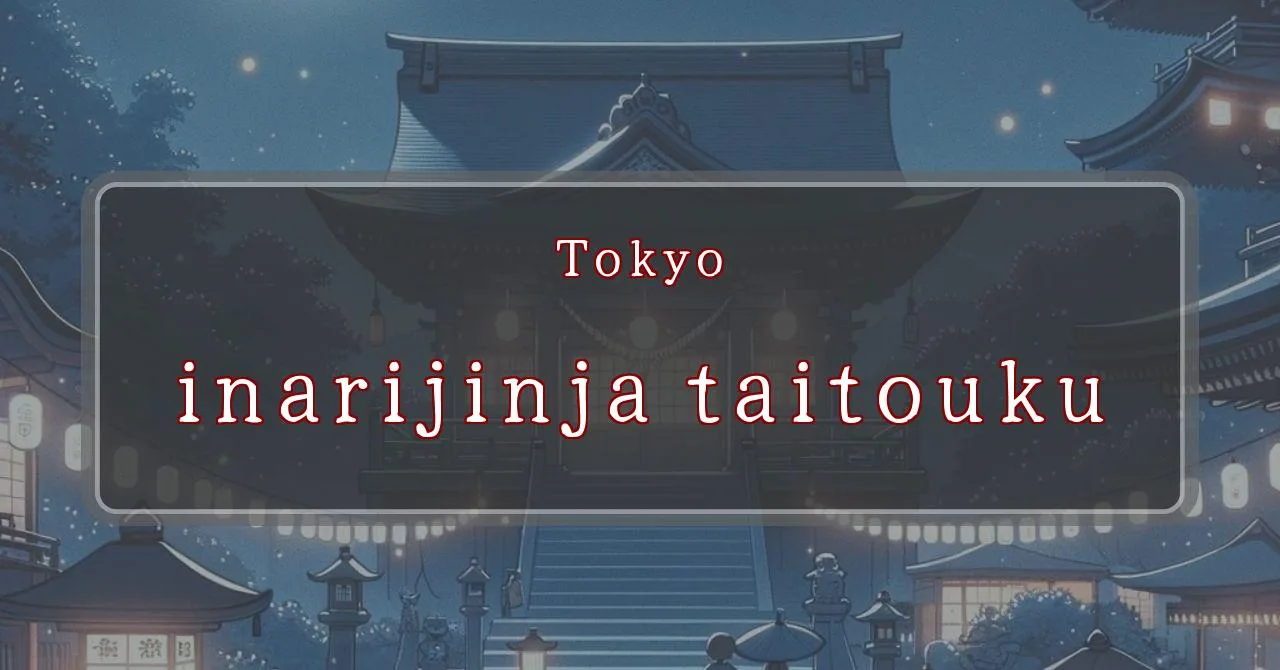Enchanting shrine festival with 3,000 lanterns
Basic Information
Inari Shrine is a Shinto shrine located in Taitō ward, Tokyo, Japan. It is dedicated to Inari, the Shinto deity of rice and sake, and is one of the most popular shrines in Tokyo.
- Address: 2-13-20 Kiyokawa, Taitō-ku, Tokyo 111-0022
- Phone Number: 03-3872-3411
- Access: 10-minute walk from JR Minami-Senju Station, 10-minute walk from Tokyo Metro Hibiya Line Minami-Senju Station, 10-minute walk from Tsukuba Express Minami-Senju Station, 3-minute walk from Toei Bus Kiyokawa 2-chome, 2-minute walk from Gururi Meguri Bus Kiyokawa 1-chome, 2-minute walk from Kita Meguri Bus Kiyokawa 1-chome
- Festival Days: April 29th (Tue) – April 30th (Wed), 2024
Main Events and Attractions of the Festival
The Inari Shrine festival is a lively and colorful event that attracts many visitors each year. Some of the main events and attractions of the festival include:
Mikoshi Procession
One of the highlights of the festival is the mikoshi procession. A mikoshi is a portable shrine that is carried through the streets by a team of people. The Inari Shrine mikoshi is a large and elaborate structure, and it is a sight to behold as it is carried through the streets.
Kagura Performance
Kagura is a traditional Japanese dance that is often performed at Shinto shrines. During the Inari Shrine festival, there will be several kagura performances throughout the day. These performances are a great way to learn more about Japanese culture and tradition.
Food Stalls
No Japanese festival is complete without food stalls! At the Inari Shrine festival, there will be a wide variety of food stalls selling everything from traditional Japanese dishes to international cuisine. There will also be plenty of drinks available, including beer, sake, and soft drinks.
Games and Activities
There will also be a number of games and activities for children and adults to enjoy at the festival. These include traditional Japanese games like ring toss and goldfish scooping, as well as more modern games like face painting and balloon animals.
Fireworks Display
The festival will culminate in a spectacular fireworks display. The fireworks will be launched from a nearby park, and they will light up the night sky with their vibrant colors.
Blessings and Deities
Inari Shrine is dedicated to Inari, the Shinto deity of rice and sake. Inari is also known as the god of fertility, prosperity, and worldly success. Inari is often depicted as an old man with a long white beard, riding a white fox. Foxes are considered to be Inari’s messengers, and they are often seen at Inari shrines.
- Blessings: Inari is believed to bestow blessings of fertility, prosperity, and worldly success.
- Deities: Inari is the main deity of Inari Shrine. Other deities enshrined at Inari Shrine include Ukanomitama-no-Kami, the god of food and agriculture, and Sarutahiko-no-Kami, the god of roads and travel.
Origin and History
The origins of Inari Shrine are unclear, but it is believed to have been founded in the 17th century. The shrine was originally located in a different part of Taitō ward, but it was moved to its current location in 1872. Inari Shrine has been a popular place of worship for centuries, and it is especially popular among business people and farmers.
- Origin: The origins of Inari Shrine are unclear, but it is believed to have been founded in the 17th century.
- History: Inari Shrine was originally located in a different part of Taitō ward, but it was moved to its current location in 1872.
Tips and Notes for Visitors
Here are some tips and notes for visitors to Inari Shrine:
- Dress Code: There is no strict dress code for visiting Inari Shrine, but it is considered respectful to dress modestly.
- Photography: Photography is allowed at Inari Shrine, but it is important to be respectful of other visitors and the shrine’s staff.
- Food and Drink: There are a number of food and drink stalls located near Inari Shrine. Visitors are also welcome to bring their own food and drink.
- Accessibility: Inari Shrine is wheelchair accessible.
Parking Information
There is no parking lot at Inari Shrine. However, there are a number of public parking lots located nearby. Visitors can also park on the streets surrounding the shrine, but it is important to be aware of the parking restrictions.
- Public Parking Lots: There are a number of public parking lots located nearby Inari Shrine.
- Street Parking: Visitors can also park on the streets surrounding the shrine, but it is important to be aware of the parking restrictions.
Popular Stalls and Food Carts in Recent Years
| Type of Stall | Description |
|---|---|
| Takoyaki | A staple at Japanese festivals. Characterized by a crispy outside and a creamy inside. |
| Jaga Butter | A simple yet popular snack of hot potatoes lavishly topped with melted butter. |
| Baby Castella | Small castella cakes, sweet and fluffy treats enjoyed by children and adults alike. |
| Grilled Ayu with Salt | Fresh ayu fish grilled whole with salt, a savory taste of Japanese summer. |
| Shaapin | A unique gourmet item influenced by foreign cuisine, with a chewy skin wrapping the filling. |
| Okonomiyaki | A Japanese grilled dish where you often choose your own ingredients for a personalized flavor. |
| Cotton Candy | A fluffy, sweet snack that’s extremely popular with children. |
| Chocolate Banana | A banana coated in chocolate, a fun and visually appealing dessert. |
| Kushiyaki | Various types of ingredients skewered and grilled, an easy-to-enjoy snack. |
| Yakisoba | Fried noodles mixed with a special sauce, a fast food favorite in Japan. |



